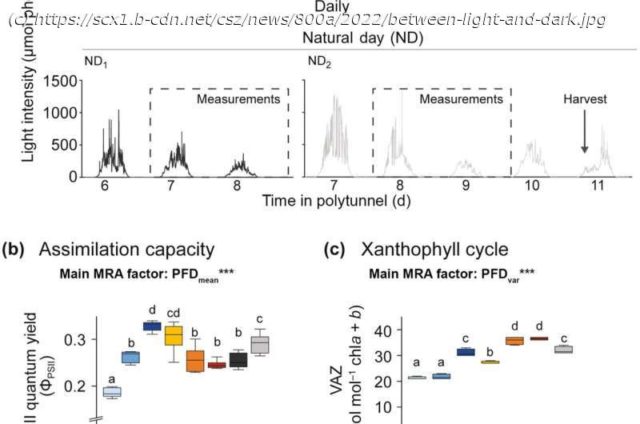For research, plants are frequently grown under stable lighting, which does not reflect natural conditions. In a series of experiments with changing light conditions, simulating the natural interplay of light and shadow, researchers from the Max Planck Institute of Molecular Plant Physiology in Potsdam-Golm (Germany) and the College of Natural Science at Michigan State University (U.S.) reveal the importance of two key proteins for the dynamic control of photosynthesis. The study was recently published in the journal New Phytologist.
For research, plants are frequently grown under stable lighting, which does not reflect natural conditions. In a series of experiments with changing light conditions, simulating the natural interplay of light and shadow, researchers from the Max Planck Institute of Molecular Plant Physiology in Potsdam-Golm (Germany) and the College of Natural Science at Michigan State University (U.S.) reveal the importance of two key proteins for the dynamic control of photosynthesis. The study was recently published in the journal New Phytologist.
Plants perform photosynthesis to grow. In this process they use energy from sunlight, release oxygen, and produce carbohydrates, which are the basic food resource for all humans and almost all animals on earth. Under natural conditions, light availability can change rapidly in a very short time.
One of the main reasons are clouds which provide light and shadow as they pass in front of the sun. Plant leaves and branches can also temporarily provide shade when they are moved by the wind. Plants cannot move from shade to sun when light is limited, and conversely, cannot evade from sun to shade when exposed to too much sunlight. They have to respond to changing light conditions in other ways.
Just like for humans, too much sunlight is harmful to plants. In particular, a rapid change between faint and intense light is problematic.






